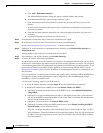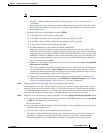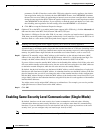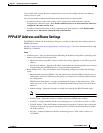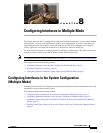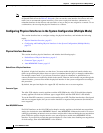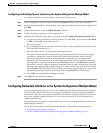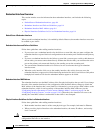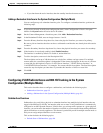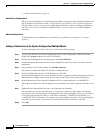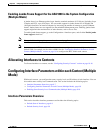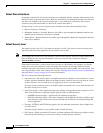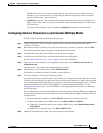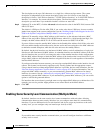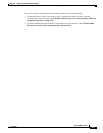
8-4
Cisco ASDM User Guide
OL-16647-01
Chapter 8 Configuring Interfaces in Multiple Mode
Configuring Interfaces in the System Configuration (Multiple Mode)
Redundant Interface Overview
This section includes overview information about redundant interfaces, and includes the following
topics:
• Default State of Redundant Interfaces, page 8-4
• Redundant Interfaces and Failover Guidelines, page 8-4
• Redundant Interface MAC Address, page 8-4
• Physical Interface Guidelines for Use in a Redundant Interface, page 8-4
Default State of Redundant Interfaces
When you add a redundant interface, it is enabled by default. However, the member interfaces must also
be enabled to pass traffic.
Redundant Interfaces and Failover Guidelines
Follow these guidelines when adding member interfaces:
• If you want to use a redundant interface for the failover or state link, then you must configure the
redundant interface as part of the basic configuration on the secondary unit in addition to the primary
unit.
• If you use a redundant interface for the failover or state link, you must put a switch or hub between
the two units; you cannot connect them directly. Without the switch or hub, you could have the active
port on the primary unit connected directly to the standby port on the secondary unit.
• You can monitor redundant interfaces for failover; be sure to reference the logical redundant
interface name.
• When the active interface fails over to the standby interface, this activity does not cause the
redundant interface to appear to be failed when being monitored for device-level failover. Only when
both physical interfaces fail does the redundant interface appear to be failed.
Redundant Interface MAC Address
The redundant interface uses the MAC address of the first physical interface that you add. If you change
the order of the member interfaces in the configuration, then the MAC address changes to match the
MAC address of the interface that is now listed first. Alternatively, you can assign a MAC address to the
redundant interface, which is used regardless of the member interface MAC addresses (see the
“Configuring Interface Parameters in each Context (Multiple Mode)” section on page 8-9 or the
“Configuring Security Contexts” section on page 10-16). When the active interface fails over to the
standby, the same MAC address is maintained so that traffic is not disrupted.
Physical Interface Guidelines for Use in a Redundant Interface
Follow these guidelines when adding member interfaces:
• Both member interfaces must be of the same physical type. For example, both must be Ethernet.
• When you add a physical interface to the redundant interface, the name, IP address, and security
level is removed.
Caution If you are using a physical interface already in your configuration, removing the name will clear any
configuration that refers to the interface.



